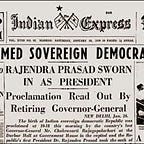XLVII: An Ahir Regiment, Seriously?
In an Army which recruits, trains, and fights in battalions organised along regional-caste lines — is creating an Ahir Regiment a bridge too far?
The National Identity XXXV: The Three Indian Armies and XXVIII: The Minority Army detail the creation of the modern Indian Army — especially focusing on their caste and regional composition. The infantry within the Indian Army is still overwhelmingly constituted along those lines. Think of the infantry regiments of the present-day Indian Army. Almost down to the last regiment, the history of each spreads well over 175 years and in some cases 275 years. The roll call of names — Sikh, Rajputana Rifles, Madras, Punjab, Jat, Dogra, Kumaon, Gharwal, Gurkha goes and on and on. (The notable exception is the Naga Regiment, formed in 1970).
Much as India was the jewel in the crown of the British Empire, the Indian Army was the real power behind the might of the British Army. The Indian Army underwrote the Empire’s security in the arc stretching from East Africa and the Middle East to Singapore — including modern day Eritrea, Iran, Iraq, Israel, Palestine, Afghanistan, Pakistan, India, Nepal, Bangladesh, Bhutan, Myanmar, Thailand and Singapore. The British Indian Army was even deployed in China in 1860 and 1900. This is a rich…
